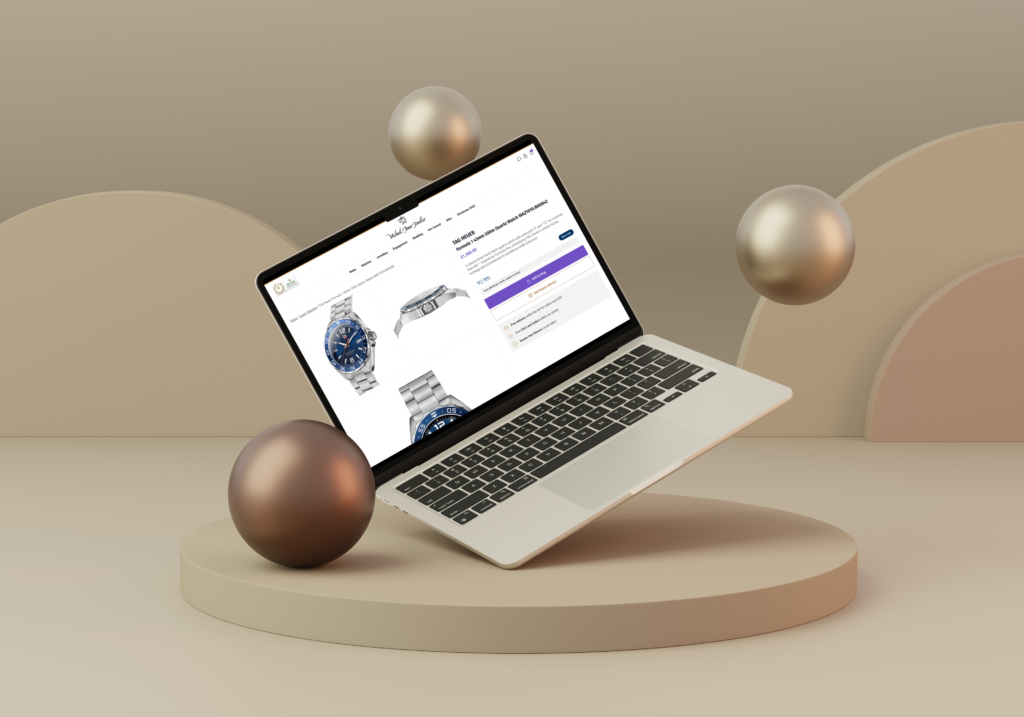A website’s design, user interface (UI), speed, and performance play a crucial role in determining its success. Not only do they impact how users perceive the brand, but they also have a direct effect on conversions.
Website design is the process of creating and organising the visual elements of a website, including layout, typography, and colour. A well-designed website can make a great first impression, creating trust and credibility with users. On the other hand, a poorly designed website can turn users off and drive them away.
Website design elements that can impact conversions include:
- Navigation: A clear and intuitive navigation menu makes it easy for users to find what they’re looking for, increasing the likelihood of conversions. A study by Unbounce found that using clear and intuitive navigation can increase conversions by as much as 100%.
- Colour: The use of colour can have a significant impact on conversions. For example, using a colour that contrasts with the background can make a call-to-action (CTA) stand out, making it more likely to be clicked. A study by ConversionXL found that using a contrasting colour for the CTA can increase conversions by as much as 21%.
- Typography: Choosing the right typography can also impact conversions. For example, using a font that is easy to read can make it more likely that users will read the content and take action.
UI Design and Conversions
UI design is the process of designing the interface elements of a website, including buttons, forms, and pop-ups. A well-designed UI can make it easy for users to interact with a website, increasing the likelihood of conversions.
UI design elements that can impact conversions include:
- The design of buttons, including their size, colour, and placement, can impact conversions. For example, using a contrasting colour for the CTA can make it more likely to be clicked.
- The design of forms, including their layout and the number of fields, can impact conversions. For example, using a single-column layout and limiting the number of fields can make it more likely that users will complete the form.
- The use of pop-ups can impact conversions. For example, using a timed pop-up that appears after a user has been on the website for a certain amount of time can increase the likelihood of conversions.

Website Speed and Performance
Website speed and performance are critical factors in determining the success of a website. A slow-loading website can drive users away, while a fast-loading website can keep them engaged and increase the likelihood of conversions.
Website speed and performance elements that can impact conversions include:
Page load time
The amount of time it takes for a page to load can have a significant impact on conversions. A slow-loading page can cause users to lose interest and leave the website, while a fast-loading page can keep them engaged and more likely to convert. According to studies, a delay of just one second in page load time can result in a 7% reduction in conversions. A study by Google found that 53% of mobile users will leave a website that takes longer than 3 seconds to load.
Image optimisation
Large, unoptimised images can slow down a website and cause users to lose interest. Optimising images for the web can significantly improve website speed and performance.
Browser caching
Caching allows a browser to store frequently accessed files locally, reducing the amount of data that needs to be downloaded each time a user visits the website. This can improve website speed and performance, and increase the likelihood of conversions. A study by Unbounce found that a website’s load time can impact bounce rates, with a 100-millisecond delay resulting in a 1% increase in bounce rate. A study by Google found that website speed is a ranking factor for search engine optimisation (SEO), and that faster-loading websites are more likely to rank higher in search results.
Website design, UI design, website speed, and performance all play crucial roles in determining the success of a website.
By understanding how different design elements impact conversions, you can optimise your website for maximum results. A well-designed website with clear and intuitive navigation, the use of colour and typography, optimised UI elements, and a fast loading speed, can increase conversions and drive more business success. It is worth noting that these statistics may vary depending on the specific website, industry, target audience and other factors. It’s always important to conduct user research and A/B testing to understand how your specific website design and performance elements impact conversions and make data-driven decisions to optimise your website for maximum results.
Whether your website is B2B (Business to Business) or B2C (Business to Consumer), we work with our clients to really understand their project requirements in order to deliver long-lasting results.
Get in touch with VI to discuss your website project today!